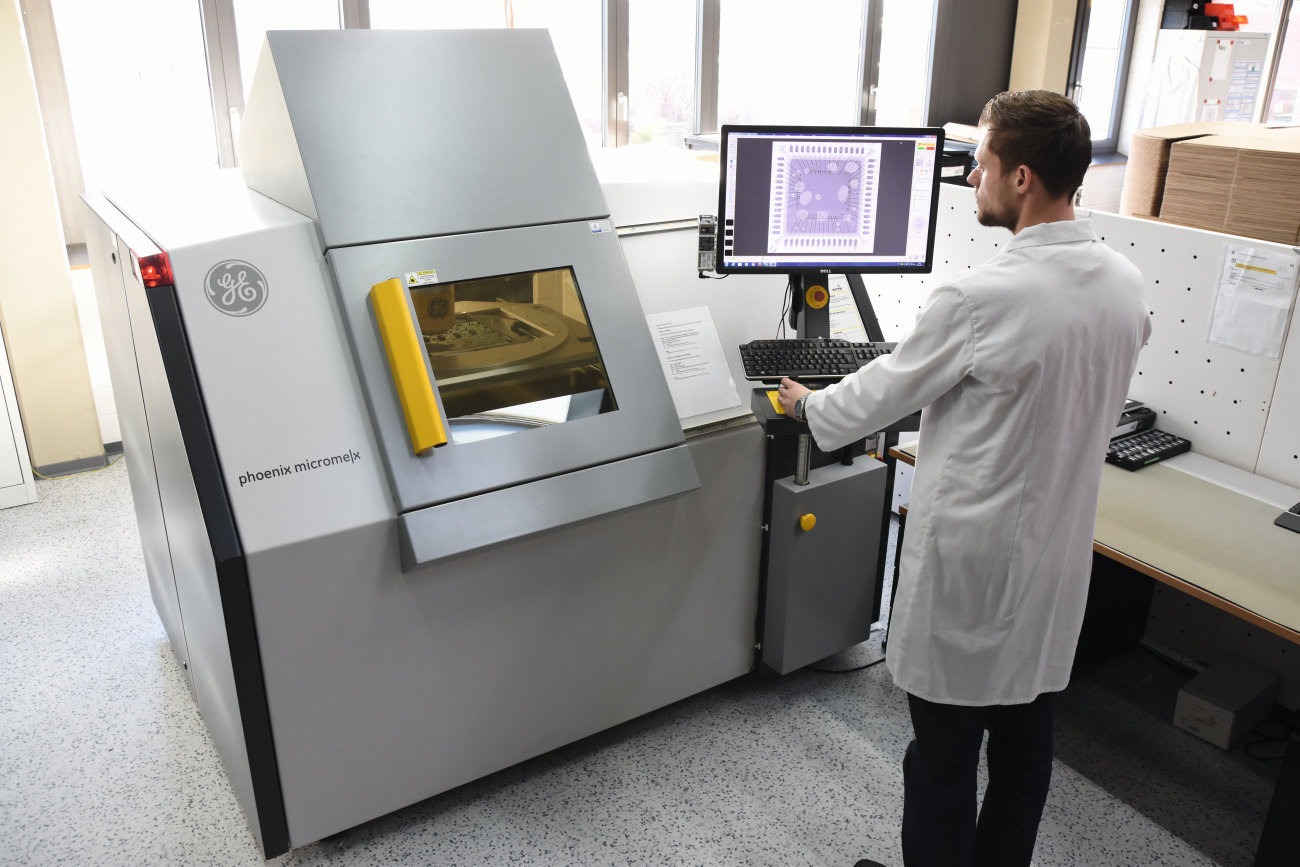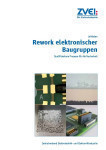This time, our special is dedicated to the topic of rework. While this has always been an important part of Electronics Manufacturing Services, there has recently been an even greater demand for rework orders. This is a clear consequence of the supply chain problems that have kept the industry on tenterhooks over the last two years. However, the increasing focus on sustainability is also leading to an increased rethink of rework solutions.
 Wilfried Marx, Sales Drews ElectronicWeoriginally heard from Andreas Kraus, Managing Director of Kraus Hardware in Großostheim, Baden-Württemberg, and part of the PLUS Advisory Board [1], that rework services are in greater demand than ever before. This aroused our curiosity. In fact, 'random' surveys of EMS providers confirmed that there has indeed been a slight increase in this area.
Wilfried Marx, Sales Drews ElectronicWeoriginally heard from Andreas Kraus, Managing Director of Kraus Hardware in Großostheim, Baden-Württemberg, and part of the PLUS Advisory Board [1], that rework services are in greater demand than ever before. This aroused our curiosity. In fact, 'random' surveys of EMS providers confirmed that there has indeed been a slight increase in this area.
For example, we were able to talk to Mr. Wilfried Marx (Drews Electronic Sales in Kamp-Lintfort, North Rhine-Westphalia). He also sees a growing need: "Rework is always necessary when something has gone wrong." Errors can occur at any point in production - and they inevitably became more frequent when the supply chain difficulties led to a desperate search for components. According to Marx, EMS tried to close the gaps. However, faulty or defective components from the Far East came onto the market, "such as overstocked goods or with bent legs". If EMS providers are not careful, this can quickly lead to fault-prone assembly. Unfortunately, fake goods are also not uncommon. Accordingly, rework is often unavoidable if there is a persistent component shortage.
Marx sees another reason that can lead to faulty assembly: due to the shortage of skilled workers (see PLUS issue 5/2023), more and more staff are being deployed who have not received sufficient training: dedicated employees who are not experts in their field or - if immigrants - have language problems. "This is inevitably a source of error," recognizes Marx. This is another reason to expect an increasing need for rework solutions.
 Rob WallsThisis in line with the observations of Rob Walls, one of the managing directors of Piek Training, a training and certification company for the electronic connectivity industry.
Rob WallsThisis in line with the observations of Rob Walls, one of the managing directors of Piek Training, a training and certification company for the electronic connectivity industry.
In the training courses that Piek offers in numerous German and European cities, as well as online, there has been an increase in untrained employees. Participation in the 'IPC-7711 & 7721 CertifiedIPC Specialist' courses also grew by 30% from 2020 to 2021 and then remained constant. IPC-7711/7721 are rework guidelines of the American trade and standardization organization based in Bannockburn (Illinois, USA), which deals with the issues of electronics manufacturing [2].
In German-speaking countries, the ZVEI published guidelines on reworking electronic assemblies at the end of 2017 [3]. It identified risks and neuralgic points within the overall process design and made recommendations for the implementation of rework, taking into account the respective framework conditions of the procedures and processes. According to Dr. Christoph Weiß, who is responsible for the guideline and the topic of rework at ZVEI, it is extremely important to consider methods for the qualified rework of electronic assemblies in view of the current shortage of materials and the need to conserve resources. Read more about his assessment of this topic on page 884.
We were also able to interview Mr. Ricco Ortmanns, rework technician at Kuttig Electronic since 2013. The medium-sized company based in Roetgen near Aachen offers all EMS services, including BGA rework, BGA reballing and SMD rework. According to Mr. Ortmanns, Kuttig has not seen an increase in rework volumes. Overall, however, he confirms that "more and more assemblies are being cannibalized" as a result of the supply chain problems. If components cannot be sourced, they are simply "plucked from assemblies for reassembly". According to Ortmanns, the increasing focus on sustainability may also be an aspect, but it is always a question of cost: "Rework is not cheap - it has to be profitable for the customer, because the market has not really recovered yet."
 Ricco Ortmanns, Kuttig Elecronic, checking rework work on the X-ray machineKuttig workswith MARTIN rework stations and an infrared underheater. Aluminum blanks are difficult to work with because they reflect and no heat is generated. Kuttig has therefore opted for a hybrid underheater in order to be able to rework large and small PCBs very flexibly with the devices. When asked about a sensible development in the area of rework, Ortmanns mentions the possibility of automatically removing old solder. Accordingly, Kuttig is always on the lookout for new solutions and is looking forward to the innovations at 'productronica'.
Ricco Ortmanns, Kuttig Elecronic, checking rework work on the X-ray machineKuttig workswith MARTIN rework stations and an infrared underheater. Aluminum blanks are difficult to work with because they reflect and no heat is generated. Kuttig has therefore opted for a hybrid underheater in order to be able to rework large and small PCBs very flexibly with the devices. When asked about a sensible development in the area of rework, Ortmanns mentions the possibility of automatically removing old solder. Accordingly, Kuttig is always on the lookout for new solutions and is looking forward to the innovations at 'productronica'.
When asked about the problem of counterfeit products and 'fake goods', Ortmanns emphasizes that Kuttig obtains components from certified brokers if nothing is available from the manufacturer. The X-ray system at Kuttig is "worth its weight in gold when reworking and assessing the work, because we can use it to check exactly whether there is a short circuit or whether the BGA is not completely melted." Broker components are subjected to an X-ray inspection to see "whether the bondings are really where they should be" or whether the housing is empty. Unfortunately, there are a lot of cases like this. Kuttig uses the test to "avoid the worst". But of course it does happen "that good-looking components produce poor results".mh-
 References
References
[1] See editorial on p. 817
[2] In German translation by Roman Meier: www.ipc.org/TOC/IPC-7711C-7721C-DE.pdf (accessed: 3.7.2023)
[3] Guideline 'Rework of electronic assemblies - Qualifiable processes for rework', see Weblinks
Weblinks
www.zvei.org/presse-medien/publikationen/rework-elektronischer-baugruppenqualifizierbare-prozesse-fuer-die-nacharbeit
www.drews-electronic.de/emsdienstleistungen/rework/
www.kuttig.de/ems-dienstleistungen/reparatur.html
Rework of electronic assemblies - Qualifiable processes for rework
 Dr. Christoph WeißInthe current times, in which topics such as material scarcity, resource conservation and material availability play an increasing role, it is of utmost importance to consider methods for a qualified rework of electronic assemblies. The ZVEI has developed an industry recommendation which proves that the rework process can be controlled if it is carried out carefully and all conditions for components, PCBs and soldering processes are observed. With a correct rework process, products can be produced that are just as good in quality as those from line production.
Dr. Christoph WeißInthe current times, in which topics such as material scarcity, resource conservation and material availability play an increasing role, it is of utmost importance to consider methods for a qualified rework of electronic assemblies. The ZVEI has developed an industry recommendation which proves that the rework process can be controlled if it is carried out carefully and all conditions for components, PCBs and soldering processes are observed. With a correct rework process, products can be produced that are just as good in quality as those from line production.
In addition to individual thermal profiling, important factors here are a qualified and reproducible rework process sequence. The same quality and product quality requirements apply as in the line process. In particular, the same acceptance and testing standards and the consistent fulfillment of all accompanying aspects with regard to type, fit and function apply. The ZVEI guideline identifies specific risks and critical points within the overall process design and provides recommendations for implementation.
Dr. Christoph Weiß, ZVEI
Reference
Guide 'Rework of electronic assemblies - Qualifiable processes for rework':
www.zvei.org/presse-medien/publikationen/rework-elektronischer-baugruppen-qualifizierbare-prozesse-fuer-die-nacharbeit


